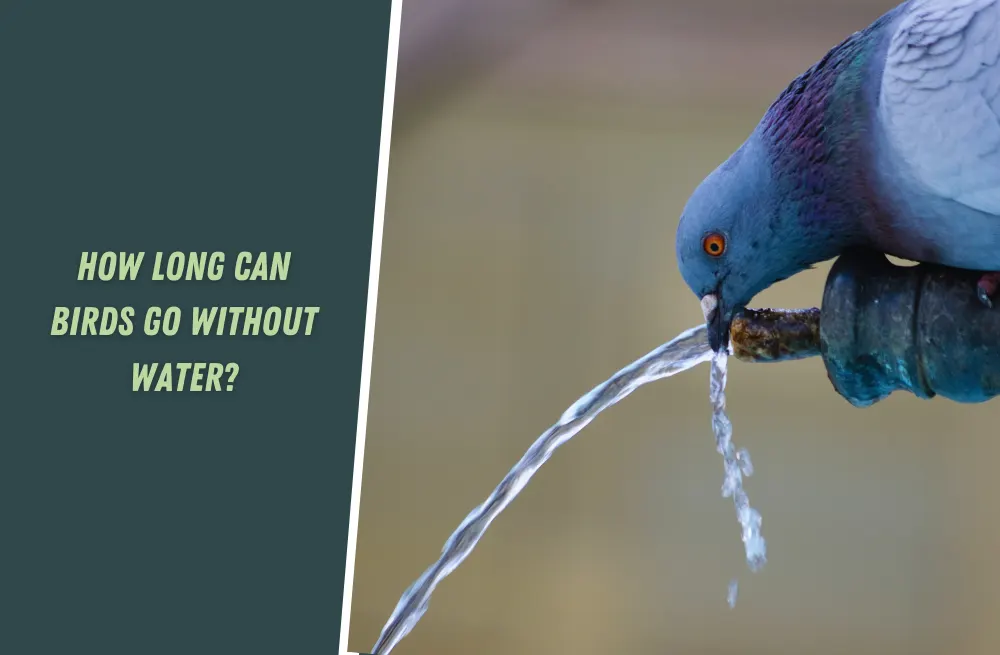Kangaroos face a range of natural predators in their native Australia. Dingoes, large birds of prey like eagles, feral dogs, crocodiles, and even large snakes such as pythons are known to prey on kangaroos. Additionally, humans, both through hunting and vehicle collisions, pose a threat to their population.
Kangaroos are iconic marsupials native to Australia, known for their unique hopping locomotion and powerful hind legs. They are well-adapted to their environment, but they are not invulnerable. Like any other animal, kangaroos have their share of natural predators.
This article will delve into the fascinating world of kangaroo predators and explore the diverse array of animals that prey upon these remarkable creatures.
Here are some animals that eat kangaroos:
- Dingoes
- Tasmanian Tigers (Thylacines)
- Large Birds of Prey (e.g., Wedge-tailed Eagles, White-bellied Sea Eagles)
- Feral Dogs
- Crocodiles (particularly Saltwater Crocodiles)
- Large Snakes (e.g., Pythons)
- Humans (through hunting)
- Road Accidents (vehicle collisions)
- Foxes
- Tasmanian Devils (although they primarily scavenge on kangaroo carcasses and rarely attack smaller kangaroos)
Dingoes

Dingoes, also known as Canis lupus dingo, are highly skilled hunters and one of Australia’s primary natural predators of kangaroos. These wild canids have a long history in the Australian landscape, with a lineage stretching back thousands of years.
Dingoes are well adapted to their diverse environments, including the arid outback, grasslands, and forests.
With their slender build, powerful legs, and exceptional speed, dingoes are well-suited for pursuing and capturing kangaroos.
They can reach speeds up to 40 miles per hour (64 kilometers per hour), allowing them to cover vast distances in pursuit of their prey. Their sharp teeth and strong jaws enable them to effectively bring down kangaroos, especially targeting young, injured, or elderly individuals that may be more vulnerable.
Dingoes employ various hunting strategies to capture kangaroos. They often work in packs, utilizing their coordinated efforts to increase their chances of success.
They rely on their acute senses, including sharp vision and keen hearing, to locate and track kangaroos across vast landscapes.
When closing in on their prey, they use their agility and endurance to outmaneuver and tire the kangaroo, eventually making a decisive move to bring it down.
It’s worth noting that the relationship between dingoes and kangaroos is complex and has evolved over time. While dingoes do prey upon kangaroos, their presence in the ecosystem also plays a role in maintaining balance and biodiversity.
Dingoes help regulate kangaroo populations, ensuring that they do not become excessively abundant, which can harm the vegetation and other species sharing their habitats.
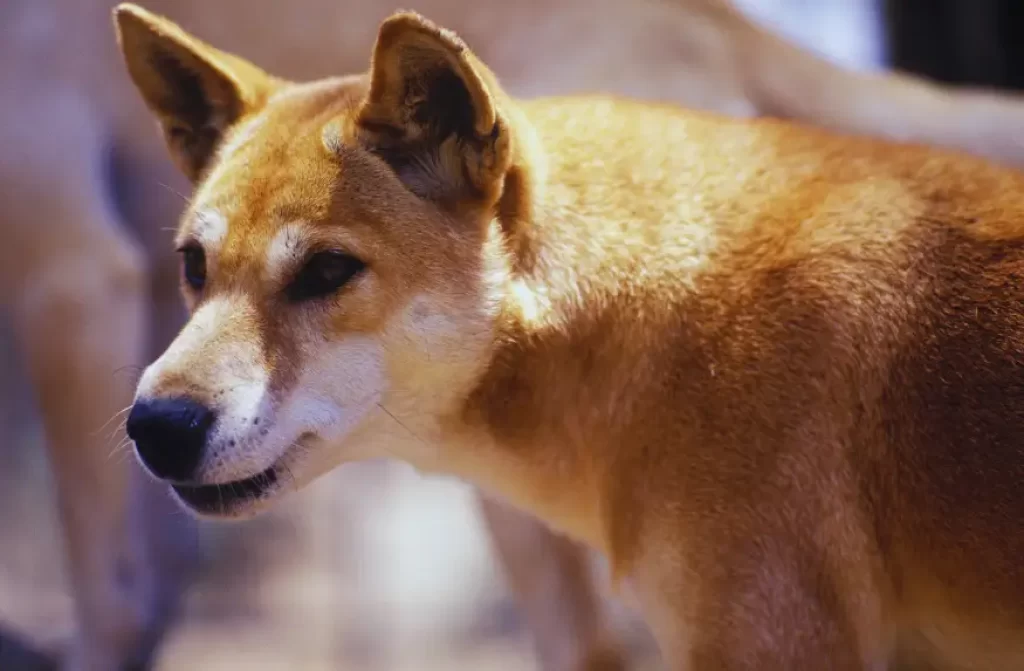
The impact of dingoes on kangaroo populations can vary depending on factors such as habitat availability, food availability, and the presence of alternative prey. In some regions, kangaroos may have evolved behavioral and physiological adaptations to coexist with dingoes.
Additionally, kangaroos have developed their own strategies, such as their incredible jumping ability, to evade dingoes and other predators.
The presence of dingoes and their predation on kangaroos is an essential component of Australia’s ecosystem. It highlights the intricate interactions between predator and prey, shaping the dynamics of the natural environment.
Tasmanian Tigers (Thylacines)
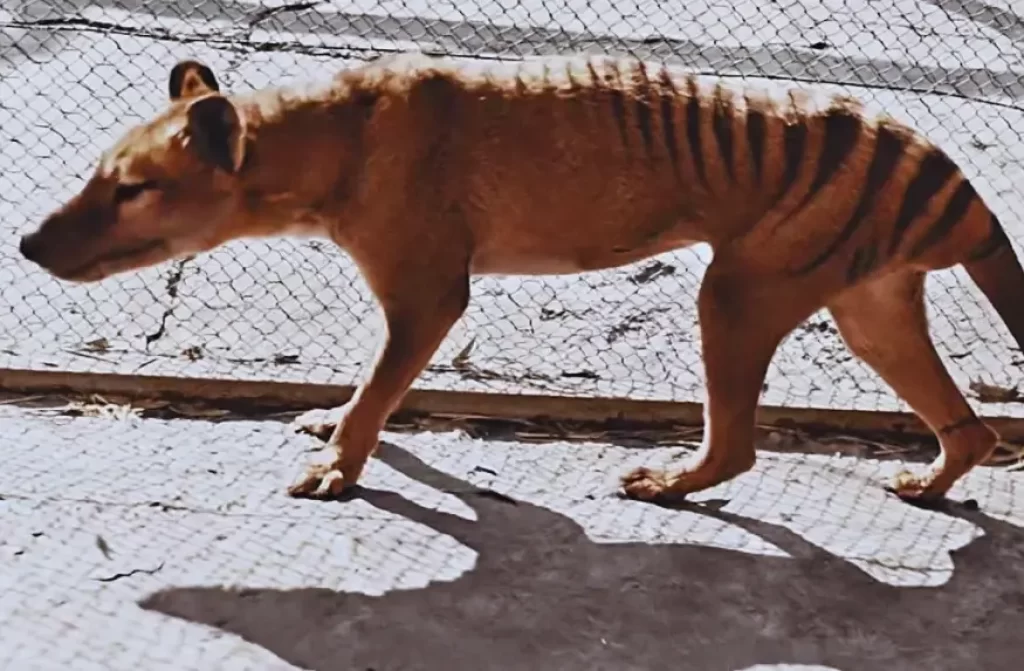
Tasmanian tigers were fascinating carnivorous marsupials that inhabited Australia, including the island of Tasmania.
While they are believed to be extinct in the wild since the early 20th century, they once played a role as predators of kangaroos in their native habitats.
Tasmanian tigers had a unique blend of physical characteristics that allowed them to hunt and capture various prey, including kangaroos.
They had slim, elongated bodies with stiff tails and distinctive tiger-like stripes across their back, which provided them with effective camouflage in the dense vegetation of their environment.
Their powerful jaws housed a set of sharp teeth, including large canines, ideal for gripping and subduing their prey.
As carnivores, Tasmanian tigers had a diverse diet, including small to medium-sized mammals, birds, and reptiles. While they were not specialized kangaroo hunters like dingoes, they occasionally targeted kangaroos as a food source.
Kangaroos were likely seen as opportunistic prey, especially when other food options were scarce or during periods when kangaroo populations were abundant.
Tasmanian tigers relied on their agility, speed, and stealth to ambush kangaroos. They would stalk their prey, utilizing their camouflaged fur and blending into the surrounding vegetation before making a sudden and decisive attack. With their strong jaws and sharp teeth, they would attempt to immobilize the kangaroo by targeting vital areas such as the neck or throat.
The extinction of Tasmanian tigers resulted from multiple factors, including habitat loss, human hunting, and disease.
Their disappearance from the wild marked the end of their role as predators of kangaroos and other native wildlife. However, their ecological impact on kangaroo populations during their existence cannot be overlooked.
Today, kangaroos continue to play a significant role in Australia’s ecosystems, with their populations regulated by a combination of factors, including predation, food availability, and environmental conditions.
While Tasmanian tigers are no longer part of this dynamic, their historical interaction with kangaroos highlights the natural world’s complex relationships.
The story of Tasmanian tigers as predators of kangaroos serves as a reminder of the intricate interplay between species within ecosystems.
Large Birds of Prey
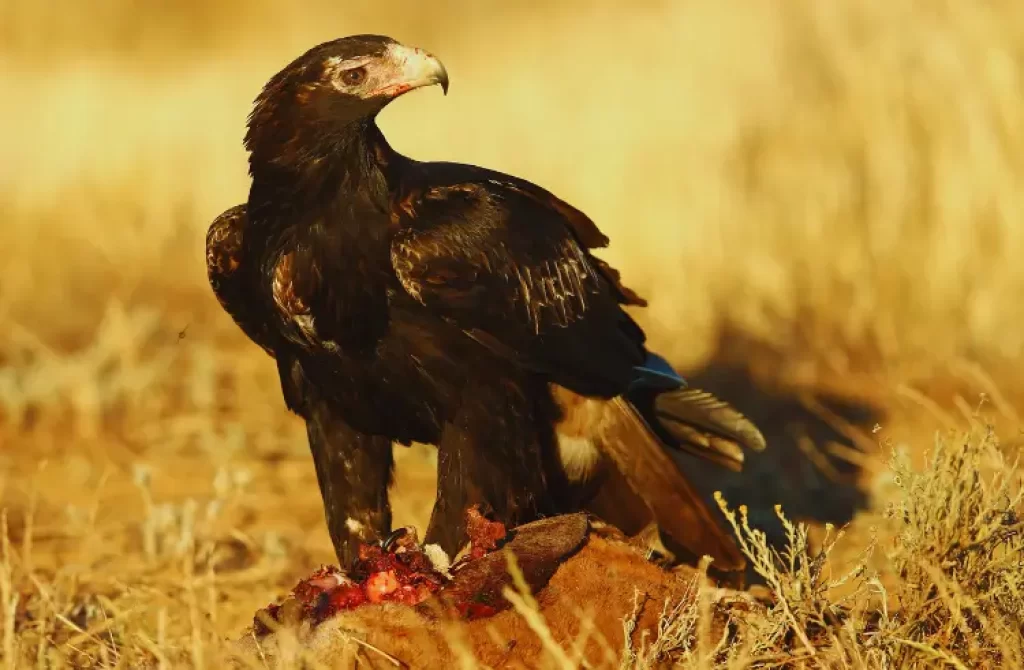
Large birds of prey in Australia, such as wedge-tailed eagles, white-bellied sea eagles, and powerful owls, are formidable hunters capable of targeting kangaroos under certain circumstances.
While these birds primarily feed on smaller prey like rodents, reptiles, and birds, they have been observed hunting young or injured kangaroos when the opportunity arises.
Wedge-tailed eagles, with their impressive wingspan and powerful talons, are one of the largest bird species in Australia.
They have keen eyesight and exceptional aerial abilities, allowing them to soar high in the sky and scan the landscape for potential prey. While their primary diet consists of carrion and small to medium-sized mammals, they have been known to attack kangaroo joeys or weakened adult kangaroos, especially during times of food scarcity.
White-bellied sea eagles, as their name suggests, are primarily associated with coastal areas and waterways.
However, they are also known to inhabit inland regions and have been observed preying on kangaroos near water sources.
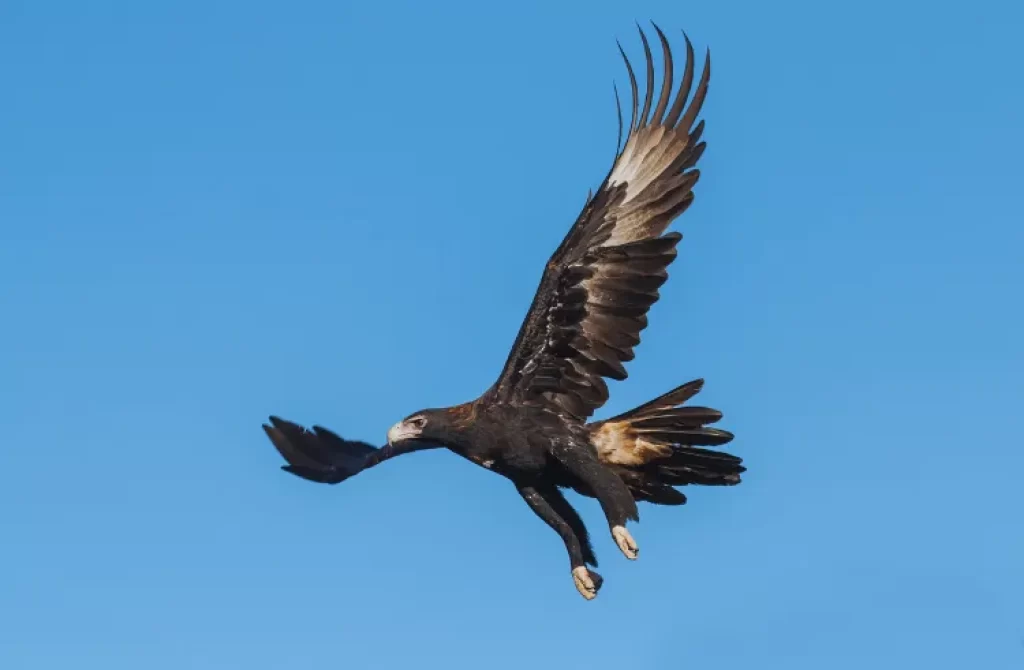
These majestic birds possess solid talons and a sharp beak, which they use to snatch and subdue their prey. Although kangaroos are not their primary food source, they may target young kangaroos or those weakened by injuries or illness.
Powerful owls, the largest owl species in Australia, have a distinct hunting strategy. They are known to occupy densely forested areas and use their exceptional hearing and silent flight to locate and ambush their prey.
While their diet primarily consists of arboreal mammals, such as possums and gliders, they have been observed targeting kangaroos in certain situations. Young or smaller kangaroos may be vulnerable to predation by powerful owls, especially during their early stages of development.
Kangaroos are agile and powerful animals, and predation by large birds of prey is relatively rare compared to other natural threats they face, such as predation by dingoes or human-induced factors.
Kangaroos have evolved various anti-predator behaviors and adaptations, including their speed, jumping ability, and strong hind limbs, which enable them to evade potential predators.
The presence of large birds of prey as occasional kangaroo predators emphasizes the diverse and dynamic nature of Australia’s ecosystems.
While these birds may not significantly impact kangaroo populations as a whole, their predation on vulnerable individuals can play a role in shaping local dynamics and contributing to the natural balance of predator-prey relationships.
Tasmanian Devils (Sarcophilus harrisii)
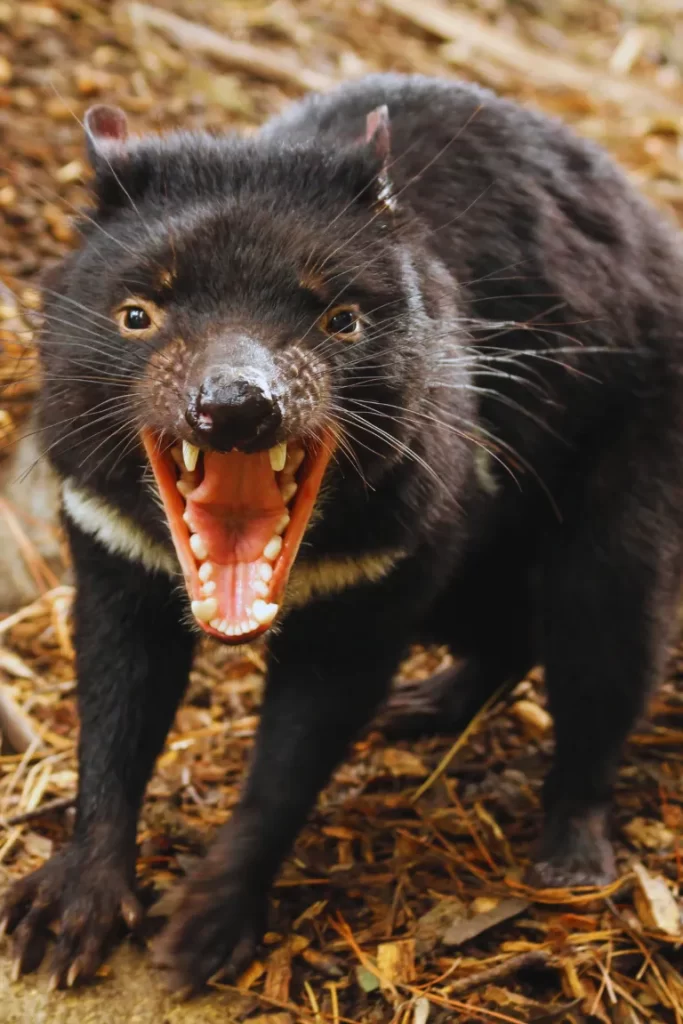
Tasmanian Devils are iconic marsupials endemic to the island of Tasmania. While they are not natural predators of kangaroos, Tasmanian Devils occasionally scavenge on kangaroo carcasses. They are more inclined to feed on the remains of deceased kangaroos rather than actively hunting them.
With an average length of around 26 inches for males and weighing approximately 18 pounds, Tasmanian Devils are relatively small in size compared to kangaroos.
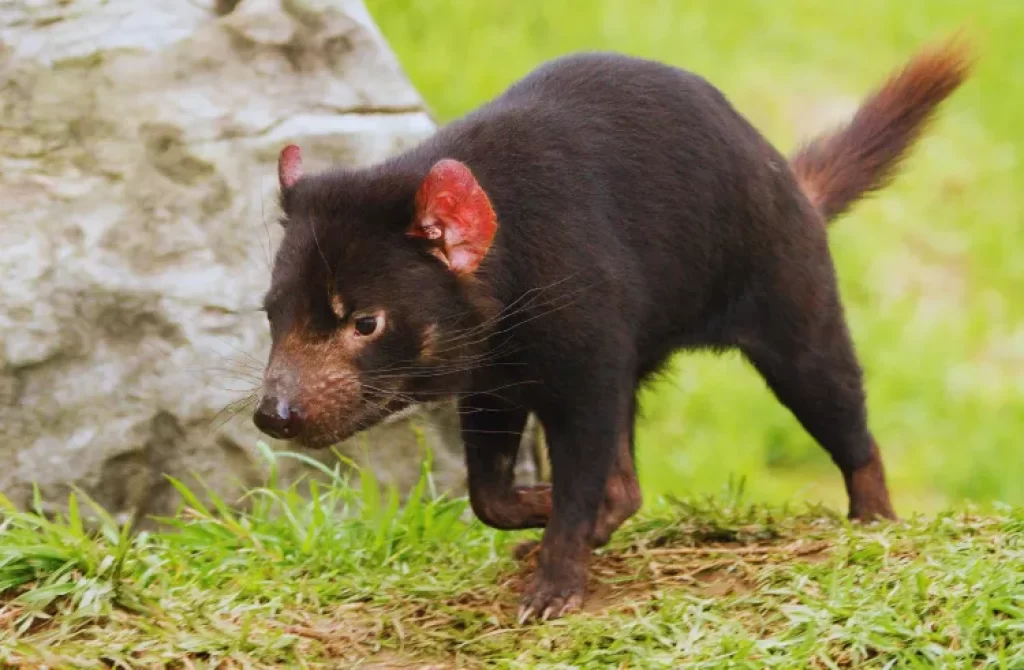
They inhabit various habitats, including coastal heaths, open and dry sclerophyll forests, and sclerophyll rainforests.
Tasmanian Devils are known for their scavenging behavior and adaptability in finding food. While they possess the ability to handle kangaroo joeys, adult kangaroos are generally formidable opponents that can defend themselves against the devils’ attacks.
Tasmanian Devils rely on their strong jaws, which can deliver a powerful bite, primarily to break through the bones of carrion rather than for actively hunting live prey.
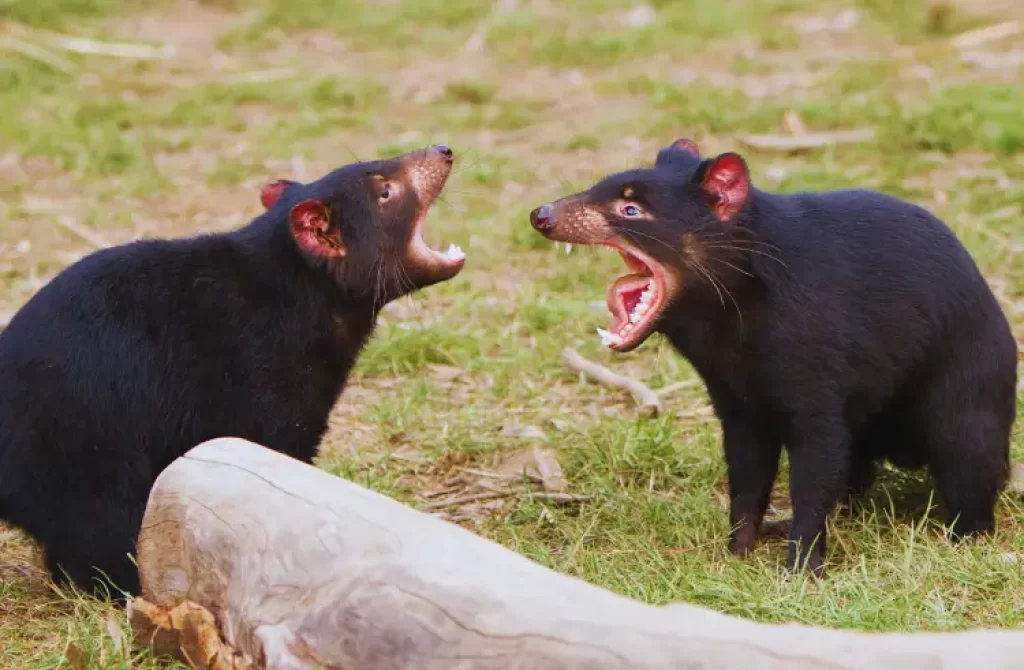
The diet of Tasmanian Devils encompasses a wide range of animal-based food sources. They are opportunistic feeders and will consume anything of animal origin that they come across.
However, Tasmanian Devils typically avoid confrontations and are more inclined to scavenge from the remains of animals rather than engage in direct predation.
Note: Tasmanian Devils play a vital ecological role as scavengers, helping to clean up and recycle carrion in their habitat. While they may occasionally encounter kangaroo carcasses, their overall impact on kangaroo populations is minimal.
Foxes
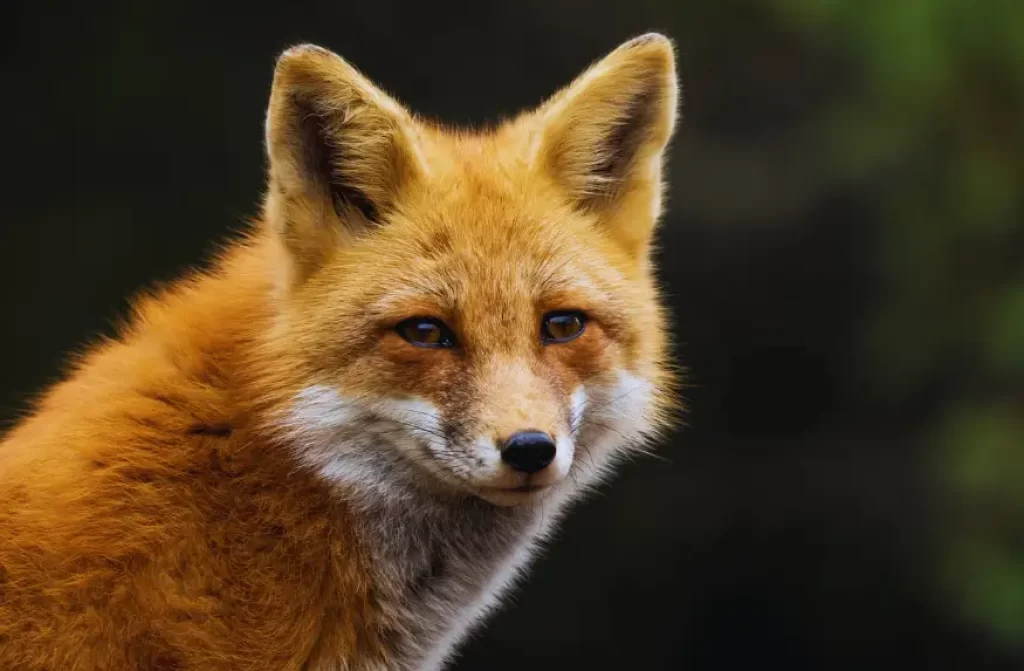
Foxes, specifically the red fox (Vulpes vulpes), are a species found in Australia, having been introduced in the 1830s for sport hunting purposes.
They have since spread across various habitats in Australia, including woodlands, forests, grasslands, and even suburban areas, except for tropical regions. Red foxes are omnivores, displaying adaptability in their diet.
With an average height ranging from 14 to 20 inches and a length of 18 to 35 inches, red foxes generally weigh between 5 and 30 pounds.
While they are the largest species of true foxes, they are still considerably smaller than fully grown kangaroos.
In their interactions with kangaroos, red foxes typically avoid direct confrontation with adult individuals.
Kangaroos possess powerful kicks that can inflict significant damage on foxes, making them a formidable opponent. Instead, red foxes primarily target smaller kangaroos, such as joeys or weak individuals, which are more vulnerable to predation.
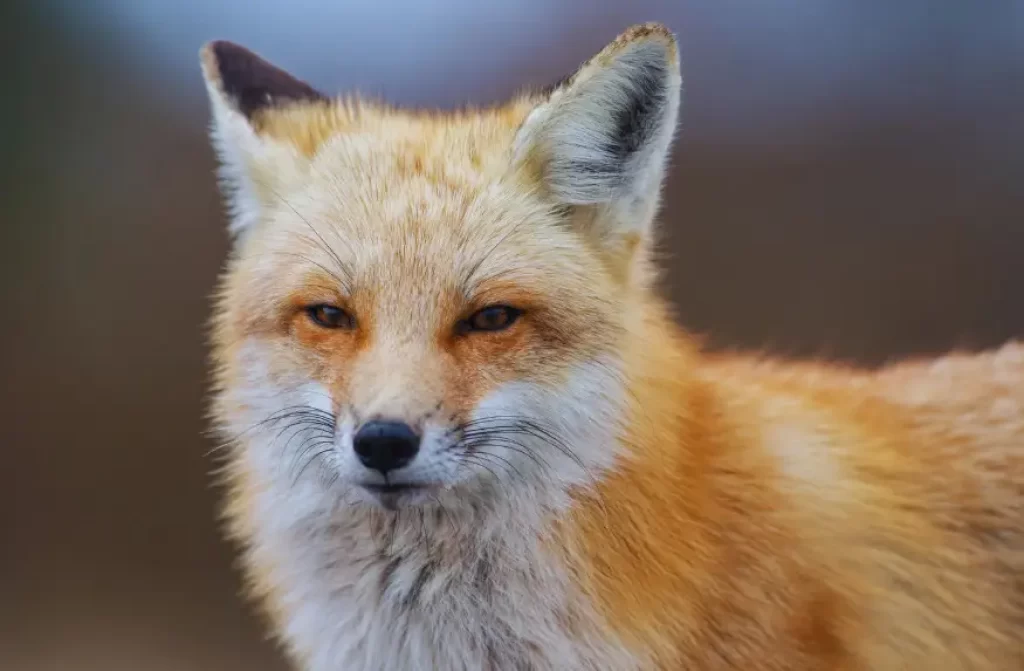
The hunting behavior of red foxes involves stalking their prey and taking advantage of opportunities that arise.
However, their interactions with kangaroos are relatively limited. Kangaroos are not a primary food source for red foxes, and they generally play a minimal role in the kangaroo population dynamics.
Note: Introducing red foxes in Australia has had significant ecological impacts. They have become a pest species, causing damage to the Australian ecosystem and contributing to the decline of native wildlife.
Feral dogs
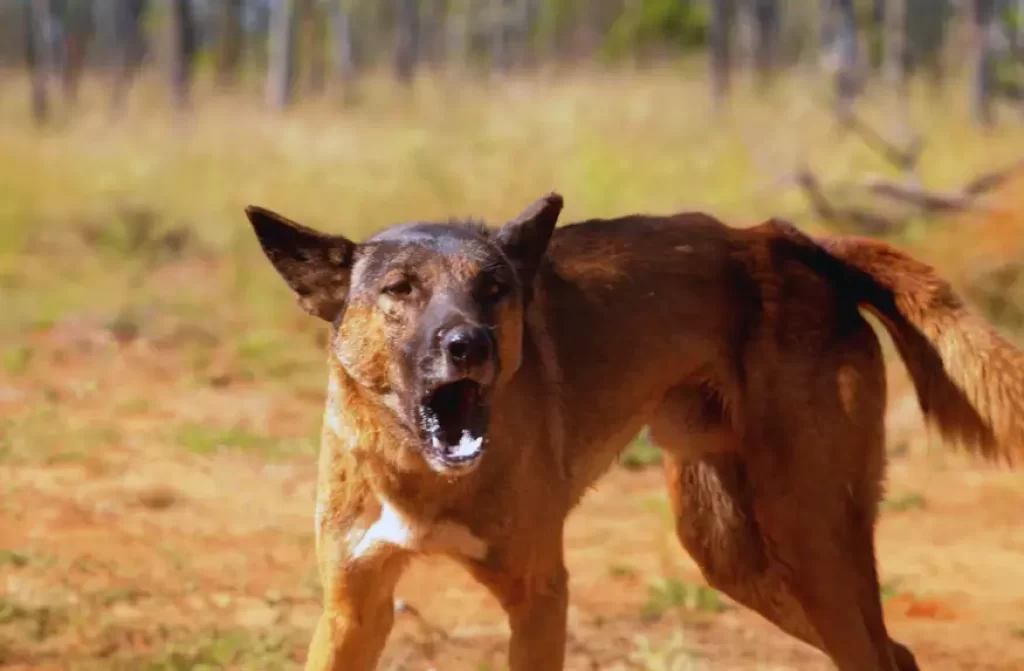
Feral dogs, also known as wild dogs, are domestic dogs that have returned to a wild or semi-wild state. They can be found in various habitats, including forests, plains, grasslands, urban areas, savannas, and deserts.
Depending on their breed and individual traits, feral dogs can exhibit a wide range of sizes and appearances.
The size of feral dogs can vary significantly depending on their breed and lineage. It can range from small to medium-sized dogs to larger breeds. The average weight can range from 50 to 70 pounds.
Feral dogs, similar to their wild relative, the dingo, possess natural hunting instincts. While they primarily scavenge for food, they can hunt and attack smaller prey, including kangaroos.
These dogs typically target young or injured kangaroos, as they are easier to capture and subdue. Adult kangaroos, with their powerful hind legs and ability to deliver strong kicks, pose a more significant challenge and potential danger to feral dogs.
When feral dogs come across kangaroo carcasses, they may feed on the remains. Kangaroo meat provides a valuable source of protein and nutrients for these dogs in the wild.
Crocodiles
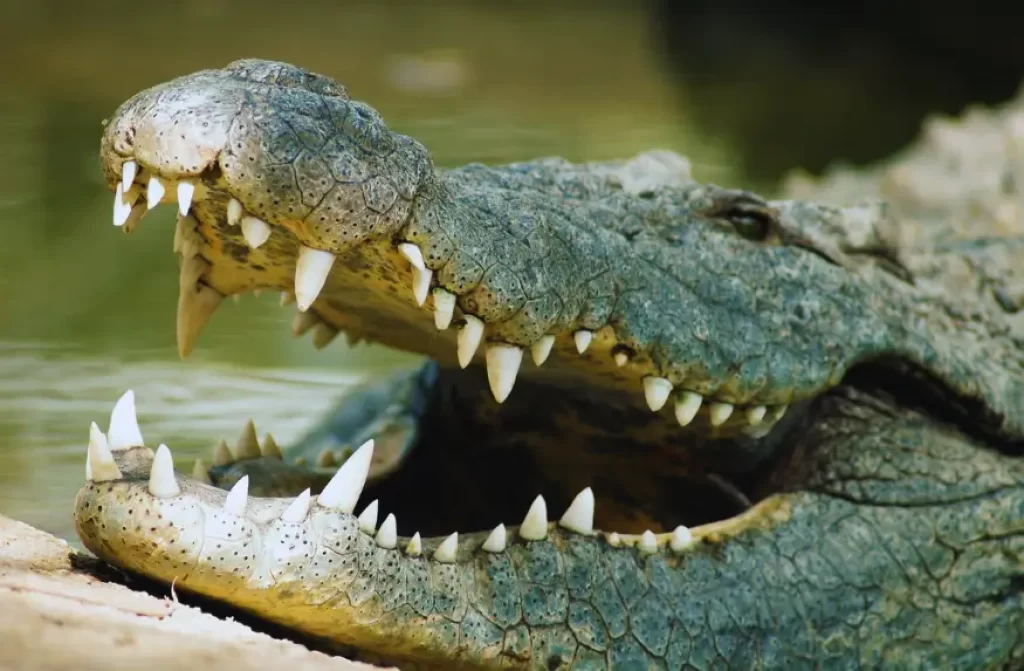
Crocodiles, particularly saltwater crocodiles (Crocodylus porosus), are formidable predators that can pose a threat to kangaroos in regions where their habitats overlap.
In northern Australia, where both species can be found, kangaroos that venture too close to water sources such as rivers or swamps may fall victim to crocodile attacks.
Saltwater crocodiles are the largest living reptiles, capable of reaching impressive sizes, with males often exceeding 15 feet in length.
They are well-adapted to aquatic environments and are skilled ambush predators. Their powerful jaws, sharp teeth, and strong bodies enable them to capture and overpower their prey swiftly.
When a kangaroo approaches a water source inhabited by crocodiles, it becomes vulnerable to ambush attacks.
Crocodiles utilize their stealth and patience, lurking beneath the water’s surface or hidden in vegetation, waiting for an opportunity to strike.
They can swiftly launch themselves from the water, using their immense strength to drag their prey into the depths.
While kangaroos are known for their agility and speed on land, they are at a disadvantage in water, where crocodiles excel.
Kangaroos that are caught near the water’s edge may struggle to escape the grip of a crocodile, as these reptiles have a strong bite and the ability to apply tremendous force.
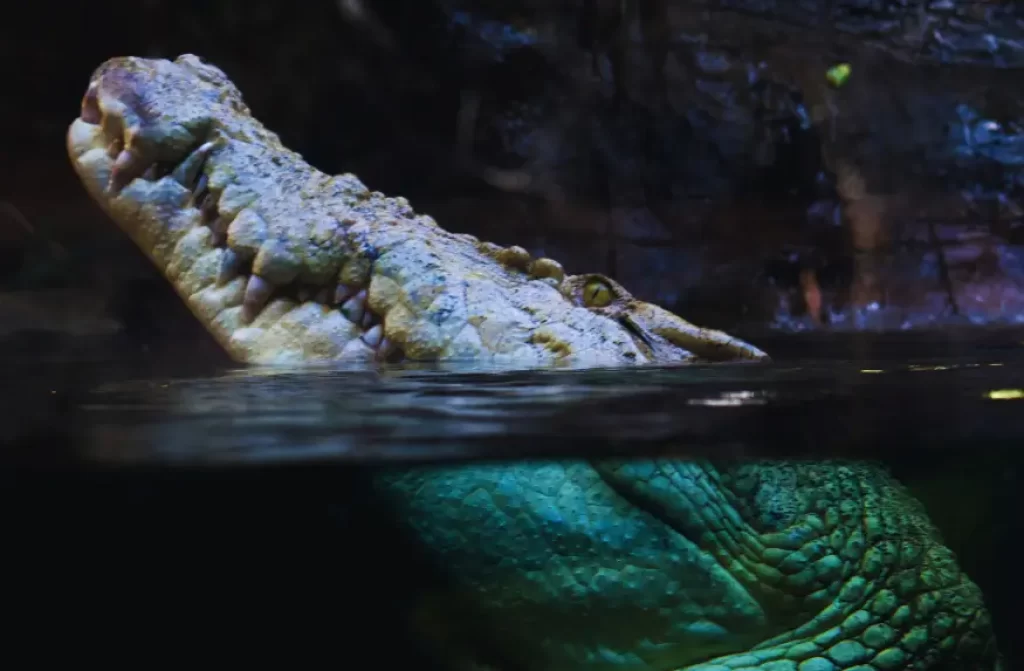
Crocodile predation on kangaroos is more common in areas where both species share habitats, especially in the northern regions of Australia.
Kangaroos that live in more arid or inland areas are less likely to encounter crocodile threats.
The presence of crocodiles in these ecosystems serves as a natural predator-prey interaction, influencing the behavior and movements of kangaroos.
Kangaroos have developed an awareness of the dangers posed by crocodiles and tend to avoid venturing too close to water sources in areas inhabited by these reptiles.
Note: Crocodiles play an essential role in maintaining the balance of ecosystems and the natural dynamics of predator-prey relationships.
Australian Scrub Pythons
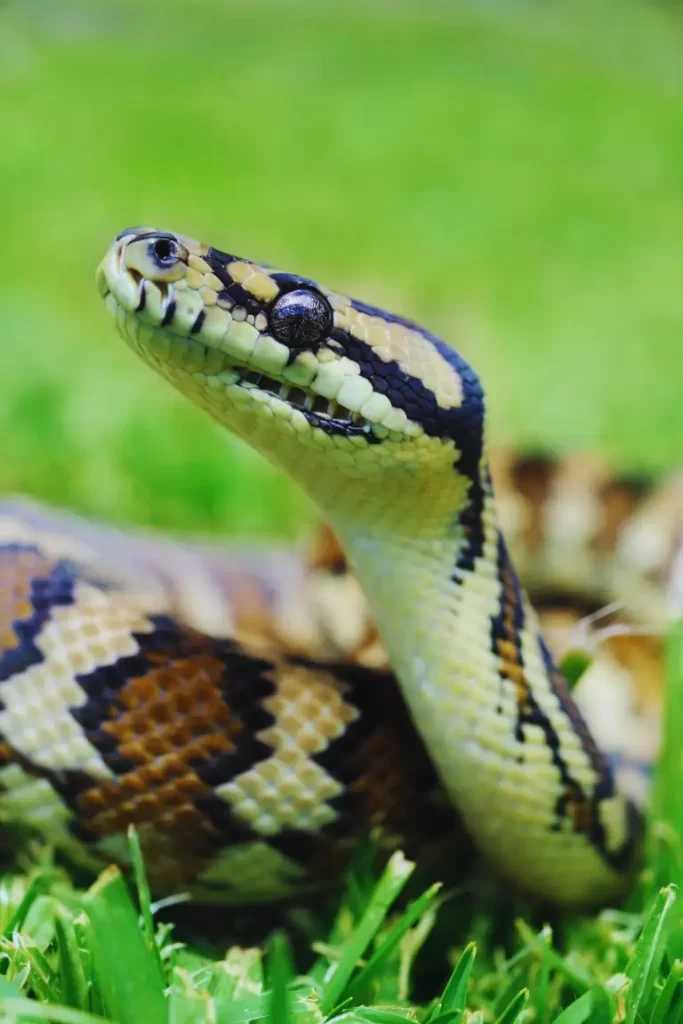
Australian Scrub Pythons, scientifically known as Simalia kinghorni, are impressive and powerful snakes found in the tropical rainforests of Australia. They hold the distinction of being the largest snake species in the country, with average lengths ranging from 197 to 290 inches and weighing around 55 pounds.
As carnivorous predators, Australian Scrub Pythons rely on their stealth and constricting abilities to capture and subdue their prey. They primarily feed on a variety of animals, including rodents, fruit bats, possums, and even kangaroos during their juvenile stage.
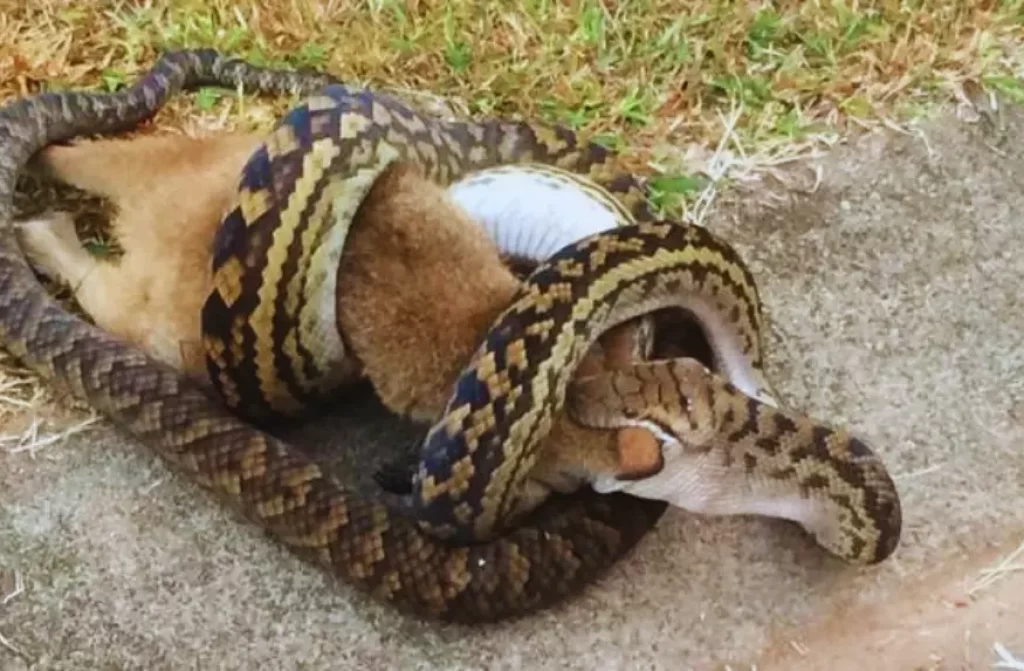
When hunting kangaroos, Australian Scrub Pythons employ a swift strike, biting their prey to initiate the attack. They then coil their muscular bodies around the kangaroo, constricting tightly to restrict its breathing and circulation. This suffocation process can lead to the prey’s demise within minutes.
While Australian Scrub Pythons can overpower smaller kangaroos, they generally avoid targeting adult individuals.
Adult kangaroos, with their larger size and powerful musculature, possess the strength to potentially break free from the python’s grasp, making them less suitable prey.
The presence of Australian Scrub Pythons in the ecosystem contributes to the natural balance and predator-prey dynamics.
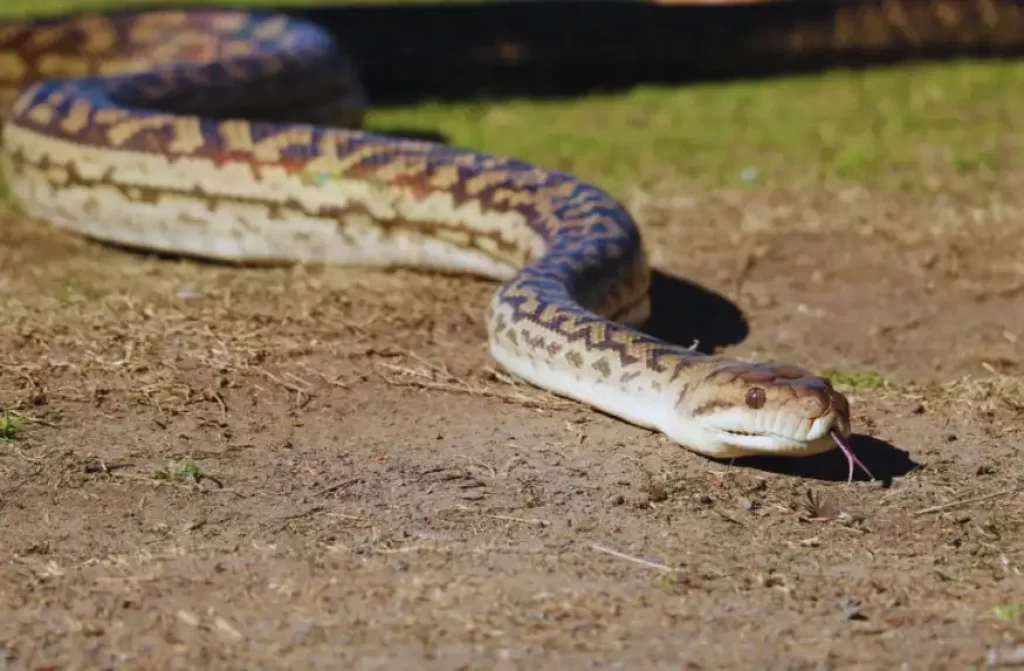
They play a vital role in controlling populations of smaller mammals, including kangaroo juveniles, helping maintain ecological equilibrium within tropical rainforest habitats.
As with other predator-prey interactions, it’s important to recognize that these encounters are part of the natural cycle of life in the Australian wilderness. Each species plays a unique role in shaping the complex web of relationships that sustains the delicate ecosystem.
Humans (through hunting)
Humans have indeed had an impact on the hunting of kangaroos, although they are not considered natural predators.
Throughout history, humans, including Indigenous Australians, have engaged in kangaroo hunting for various reasons, including sustenance, cultural practices, and population control.
Indigenous Australians have a long-standing relationship with kangaroos and have traditionally hunted them as a reliable food source.
They possess deep knowledge and understanding of kangaroo behavior and have developed hunting techniques that are sustainable and respectful of the animal and the environment.
Kangaroo meat has been an important part of their diet, providing essential nutrients and sustenance for their communities.
In addition to food, Indigenous Australians have utilized kangaroo hides, bones, and other parts for cultural purposes.
Kangaroo skins have been used for clothing, shelter, and ceremonial items, showcasing the resourcefulness and reverence for these animals within Indigenous cultures.
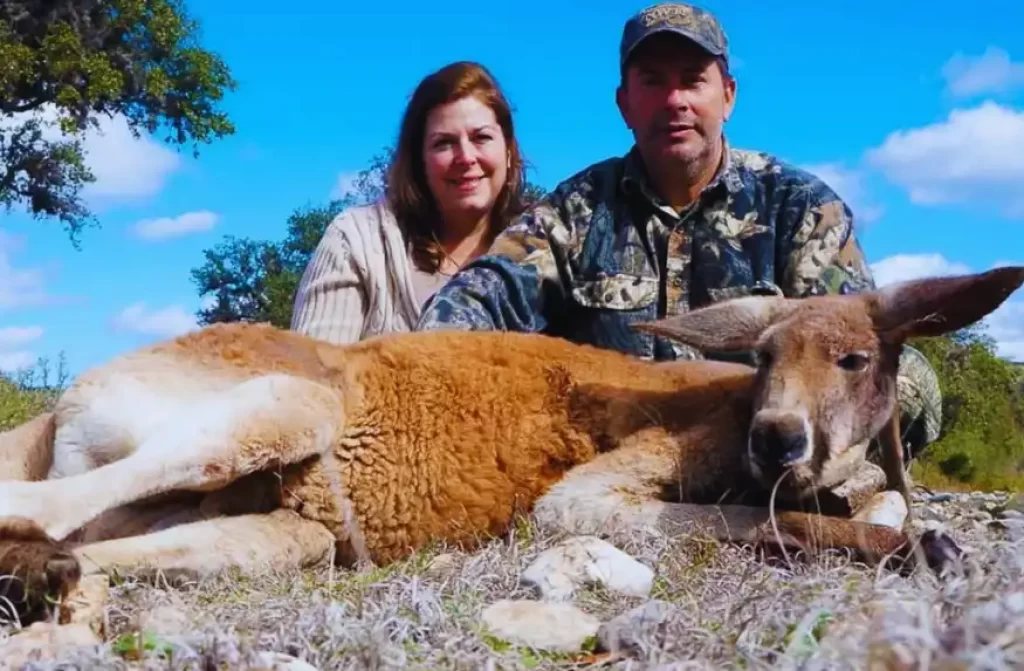
In more recent times, kangaroo hunting by non-Indigenous Australians has primarily focused on population control and meat consumption.
Kangaroo populations can sometimes reach high densities, leading to concerns about overgrazing and competition with livestock in certain areas.
As a result, regulated kangaroo harvesting programs have been implemented to manage populations and reduce their impact on the environment.
Kangaroo meat is recognized for its nutritional value and sustainability, and it is consumed domestically and exported to various countries.
It is important to note that kangaroo hunting in Australia is strictly regulated to ensure the sustainability of kangaroo populations and the humane treatment of the animals.
Licensed hunters must adhere to specific guidelines and quotas set by wildlife management authorities to maintain ecological balance and prevent overexploitation.
While humans are not natural predators of kangaroos, their historical and contemporary interactions with kangaroo populations have involved hunting for food, cultural practices, and population control.
Understanding the complex relationship between humans and kangaroos provides insights into the cultural, environmental, and conservation aspects associated with managing these iconic Australian animals.
Conclusion
Kangaroos have evolved to be resilient and well-adapted to their environment, with few natural predators posing a threat to their survival.
Their size, strength, and agility give them an advantage against most would-be hunters. However, they are not completely exempt from predation, especially during vulnerable stages of their life cycle.
Humans play a significant role in hunting kangaroos for various reasons, including meat consumption and population control. Indigenous communities have long relied on kangaroo as a valuable food source and utilized different parts of the animal for cultural purposes. Accidental vehicle collisions and crop protection measures contribute to kangaroo mortality.
It is essential to acknowledge the complexity of the predator-prey relationship in nature. While certain predators may target kangaroos, they also serve as a source of sustenance for other species, completing the intricate web of life.
If you found this article informative and intriguing, I invite you to explore other articles on our website, where you can delve deeper into the fascinating world of wildlife and nature. We cover a wide range of topics related to animals, their habitats, and their interactions with the environment.
To further expand your knowledge, we offer additional resources such as eBooks that provide in-depth insights into various aspects of wildlife. These resources can enhance your understanding and appreciation for our planet’s diverse creatures.
Thank you for joining us on this exploration of the predators of kangaroos, and we hope you continue to discover and learn more about the wonders of the natural world through our articles and resources.
Frequently Asked Questions
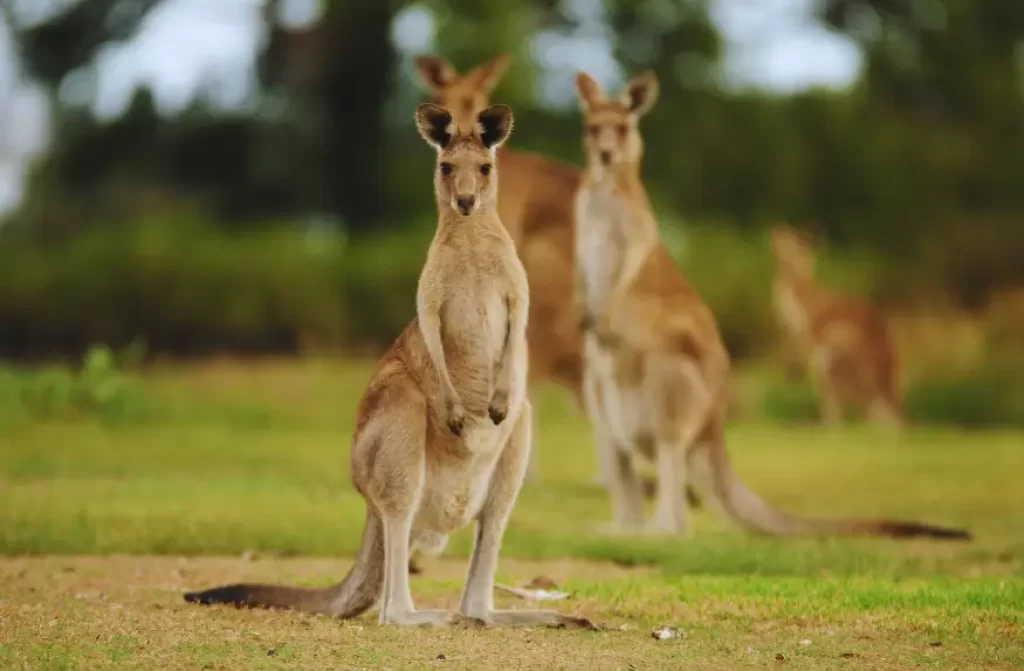
Do kangaroos bite humans?
Yes, kangaroos have the ability to bite humans if they feel threatened or provoked. While it is not a common occurrence, kangaroos may resort to biting as a means of self-defense. Their sharp teeth and strong jaw muscles make their bites potentially dangerous.
However, it’s important to note that kangaroos generally prefer to avoid confrontations with humans and will typically only bite as a last resort.
Maintaining a safe distance and avoiding actions that may agitate or provoke kangaroos is advisable to minimize the risk of being bitten.
Do kangaroos kill humans?
Kangaroos are not known to seek out or attack humans actively. They are generally docile and avoid confrontations with humans whenever possible.
However, there have been rare instances where kangaroos have exhibited aggressive behavior towards humans, especially if they feel threatened or cornered.
Male kangaroos, known as bucks, can be particularly aggressive during mating season or when defending their territory.
They may display aggressive behaviors such as boxing with their forelimbs or kicking with their powerful hind legs. In such cases, it is important for humans to keep a safe distance and avoid provoking or approaching kangaroos.
How far can a kangaroo kick a person?
Kangaroos are known for their powerful kicks, which they primarily use for self-defense. A kangaroo’s kick can be quite forceful and potentially cause serious injury to a person.
They are capable of kicking with both their hind legs simultaneously, delivering a powerful blow.
While it is challenging to provide an exact distance, a kangaroo’s kick can reach several feet, potentially striking a person within close proximity.
Do Tigers Eat Kangaroos?
No, tigers do not naturally occur in the same habitats as kangaroos. Tigers are primarily found in Asia, while kangaroos are native to Australia.
Tigers are carnivorous predators and their diet mainly consists of large ungulates such as deer, wild boars, and cattle. They are not adapted to hunt or consume kangaroos.
The interaction between tigers and kangaroos would only occur in captive settings, such as in a zoo, where tigers may be fed a variety of meat-based diets. In the wild, tigers and kangaroos do not share the same ecosystem or predator-prey relationship.
Do Lions Eat Kangaroos?
No, lions do not naturally occur in the same habitats as kangaroos. Lions are native to Africa, while kangaroos are found in Australia. Lions are apex predators and their primary prey consists of large herbivores such as zebras, wildebeest, and buffalo.
They are not adapted to hunt or consume kangaroos. The interaction between lions and kangaroos would only occur in captive settings, such as in a zoo, where lions may be provided with a varied diet that includes different types of meat.
In the wild, lions, and kangaroos do not share the same ecosystem or predator-prey relationship.






